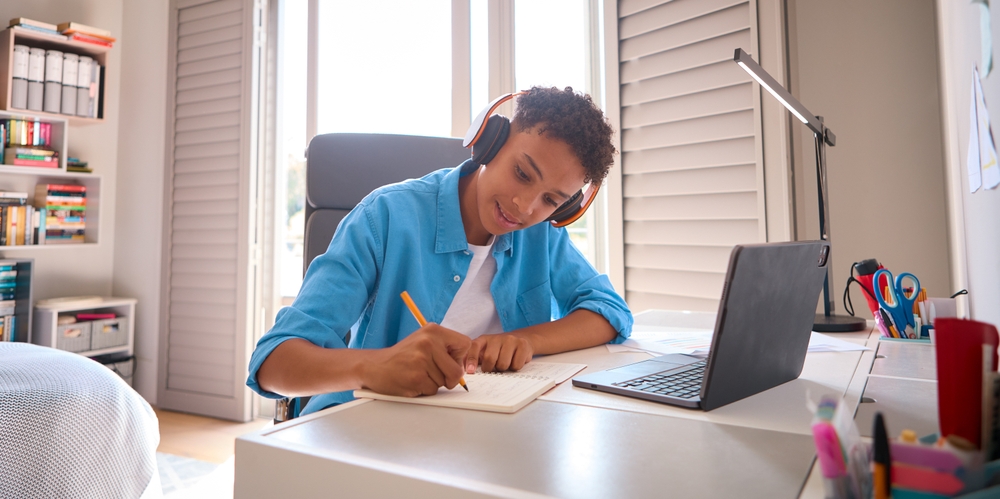
How many times have you found your child lying in their bed covered by blankets with their books and laptop buried underneath? This may feel comfortable for them, but it doesn’t contribute to their ability to be productive. Having a designated physical workspace is important for your child to maximize their focus and—in effect—their ability to work efficiently and well.
How to Set up a Workspace
While a conducive work environment for students is a good idea at any point in the school year, setting it up at the onset will save a lot of time (and maybe some tears) as the year unfolds. Check out our tips below to get started.
Choose the ideal location: This area should be a place with surface space for the student to spread out their books, computers, and other supplies. It should, if possible, be dedicated to school and homework (unlike the kitchen table, which will likely need to be cleared off each evening). It should also be an area with limited distractions. For some, that means outside of their room where all of their cool stuff is. For others, it means away from the hustle and bustle of family activity. You and your child know what will work best for them.
Ensure the workspace has good lighting. That may mean setting up near a window or an area with overhead lighting, or it may mean that it’s time to purchase a lamp. When students can’t see well, their eyes easily become tired and they’re less able to focus.
Consider phones and other screens: We have yet to meet a student who doesn’t recognize that their phone is a distraction. Engage them in a conversation about how they can manage that distraction. Some strategies that our students use include activating airplane mode during work periods, putting the phone in a drawer or another room, using AppBlock to set rules related to how they want to use their phone, and – we swear it’s true! – in one case, a timed lockbox!
Have supplies at hand: Keep pencils, pens, printer ink, paper, index cards, notebooks, a calculator, and whatever else your child may need in drawers or bins nearby. If mobility is paramount or space is limited, fill a caddy with everyday supplies that can easily be transported. When everything they need is close, your child will have fewer interruptions. One final item we always recommend: a clock or a timer that isn’t their smartphone!
Create a text-rich space: Classroom walls are filled with information that helps students get their work done: maps, calendars, important formulas, reminders, vocabulary words, and encouragement all help students do what they need to do. Encourage your child to think about what they have on the walls (or a trifold) around their workspace to support their work. Many of our students benefit from a whiteboard, a weekly calendar, a list of teacher contact information, and daily checklists of tasks to do or supplies to pack. Consider a vision board that can help them remember their long-term motivation for doing their best work.
Keep a timer nearby. Timers have multiple uses; for example, if there’s a reading assignment that your child isn’t pumped about, they can set a timer for just fifteen, or even five, minutes, and focus for just that short time. If they need a break, they can set the timer to limit that break. Have them choose the type of timer that’s best for them, too. It may be an hourglass timer or a digital one–whichever is most effective!
Have a “go-to” spot: The expression “a place for everything and everything in its place” describes an ideal that most of us can only aspire to. As a safety, identify a place where parents, siblings, & housekeepers can drop your child’s items when they inevitably are found throughout the house. For even more organization, establish the expectation that your child should put away anything in their “go-to” spot each day.
No matter which of the above strategies you use, help your child make their workspace truly theirs. That way, the space will contribute to a positive learning experience. Let them have fun with it: decorate it with inspirational quotes, their own artwork or awards, or a cool poster that gives them a positive mindset to get working! For more help with organizing a physical workspace, contact an executive functioning coach at Private Prep.




